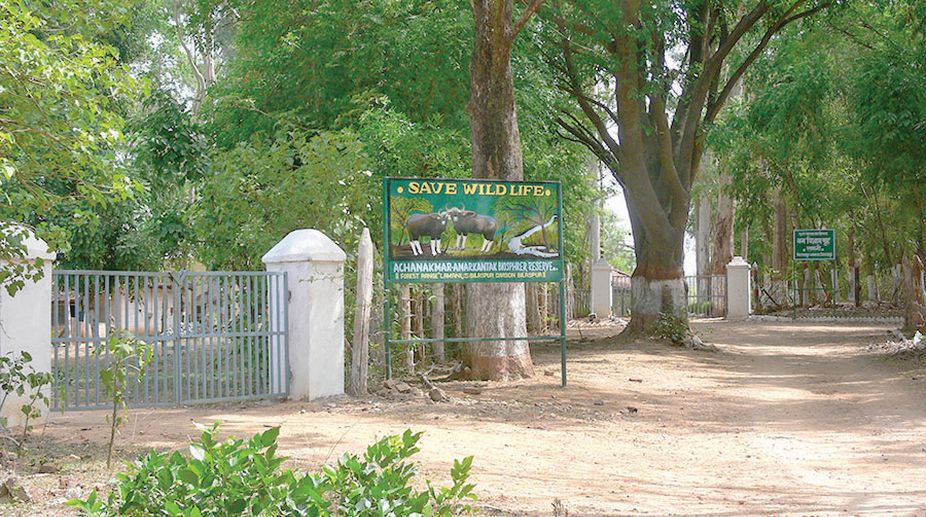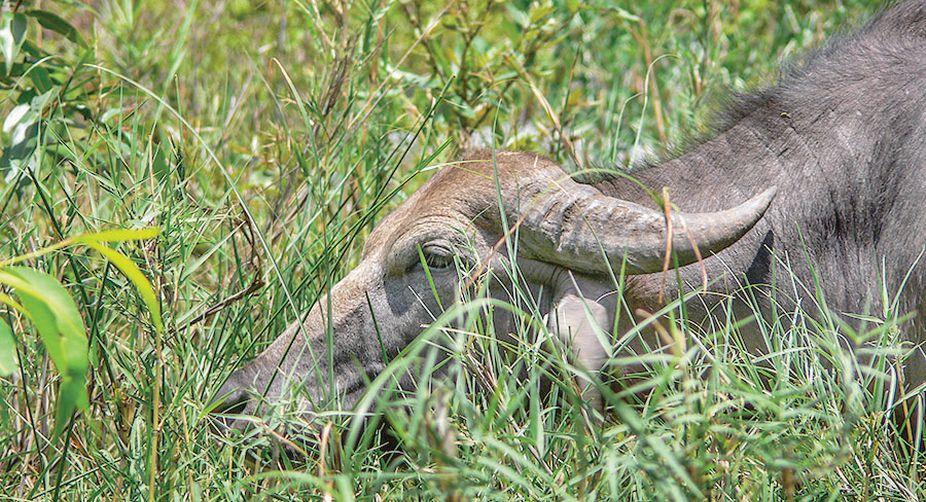K’taka Police arrests 42 farmers in Byadgi red chilli violence case
He said that another team has also been sent to Nellore region of Andhra Pradesh to nab those who indulged in violence.
A major challenge for the survival of several wildlife species is the fragmentation of their habitat. Conservationists are thus faced with the challenges and complexities of maintaining connected landscapes, especially for large-ranging species. Asha Ramachandran meets top conservation practitioners, who came together in the Capital to discuss corridors, connectivity and landscapes for wildlife conservation

Photos by Vinod Goel & Asha Ramachandran
There was this heartening story recently of a farmer, who did not harvest his sugarcane fields because it housed a tigress and her cubs. However, this is not always the case as several animals, including big cats ~ tigers and leopards ~ take advantage of standing crops, mainly sugarcane, to give birth and rear their young ones. And this is where conflicts arise as villagers attempt to harvest their crops and the animals strive to protect their young ones.
Animals know no boundaries. Protected areas have been designated to ensure a safe haven for them. But how does one explain that to a wild animal, particularly one that needs a large range to move about? All our protected areas and forests are surrounded by villages and farm-land.
Forests are no longer contiguous and are fragmented. Large-range animals, driven by age-old migratory instincts, traverse human habitation to move from one forest patch to another, leading to encounters with people, many of them not so happy.
Advertisement
Elephants, for instance, are known to ravage fields, leading to much economic loss for the people. So do deer and wild hogs, which move out of forests in search of food and water. But the moot question is: Who is to blame?
“How do we manage this interaction between people and wildlife?” questions Dipankar Ghose, Director of the Species and Landscapes Programme, WWF-India. Speaking at the end of a three-day workshop organised earlier this month, by WWF-India and WWF Tigers Alive in the Capital, Ghose pointed to the need for a proper corridor management plan.
Unmindful felling of trees has been mainly blamed for forest fragmentation. Infrastructure development, including major highways traversing forest land as also mining and irrigation projects pose major threats to contiguous forests.
Wildlife experts have been calling for a safe passage or corridors to ensure migration of wildlife while minimizing interactions, or conflicts, with humans. Wildlife migration is also essential to maintain their genetic health as limiting a species to an area could lead to in-breeding and a range of genetic problems.
Speaking on the need to secure connectivity in an increasingly human-dominated landscape, Ashley Brooks, Lead, Human-Wildlife Conflict and Habitats, WWF Tigers Alive, said “Many of WWF’s priority species are wide-ranging and require connected habitats to persist in the wild. These wide-ranging species are increasingly limited to fragmented areas surrounded by human-dominated landscapes, limiting their dispersal. Protecting and maintaining functionality of some of the important wildlife corridors is thus crucial for the long-term survival of wildlife.”
Corridor plans
To ensure a healthy corridor network, wildlife experts have been calling for it to be recognised legally. They have stressed upon the need to integrate corridor management into wildlife and environment laws. “Corridors should be recognised legally,” asserted Ghose. “To push for the 180-odd corridors currently existing to be converted into protected areas is not practical because all corridors are shared spaces.”
In India, tiger conservation also advocates corridor management plans. In fact, Madhya Pradesh has gone in for micro-planning of these corridors, informed Ghose. An investment of Rs 4 crore has been made, with the involvement of a number of sectors ~ from agriculture to forest departments ~ to manage crops in the corridors.
“However, a lot needs to be done for the people,” noted Ghose. “The approach has to be a two-pronged strategy. In Uttar Pradesh, for instance, an interim relief for any livestock killing is given within 24 hours. The amount has also been raised from Rs 5,000 to Rs 40,000.”
Besides sensitization of villagers living in and along the corridors, there is regular monitoring of wildlife, including co-predators and prey base density outside the protected areas.
Linear infrastructure
A major concern for managing wildlife corridors is the fall-out of India’s economic development and subsequent socio-economic pressures. Given the need for connectivity, there is increasing stress on linear infrastructure network in the country.
This comprises roads, trains and power lines that cut through forests as they traverse across the country. Apart from the ecological destruction, they also cause wildlife casualties ~ road kills, electrocution and train accidents.

Prime examples of this are the National Highways (NH) that pass through Kaziranga National Park and Borail Wildlife Sanctuary in Assam; NH 72 and 74 crossing Rajaji National Park; and NH 6 and 7 cutting through six tiger corridors in the Vidarbha region of Maharashtra.
A major cause for worry is the Union environment ministry’s policy to ease the clearance process for linear infrastructure. “Before mitigation, there is need to see whether roads can go through the forests or they must be re-aligned,” noted Ghose.
Malaysia has in place a no-go policy. But where highways are inevitable, underpasses are created with proper re-vegetation.
Advertisement